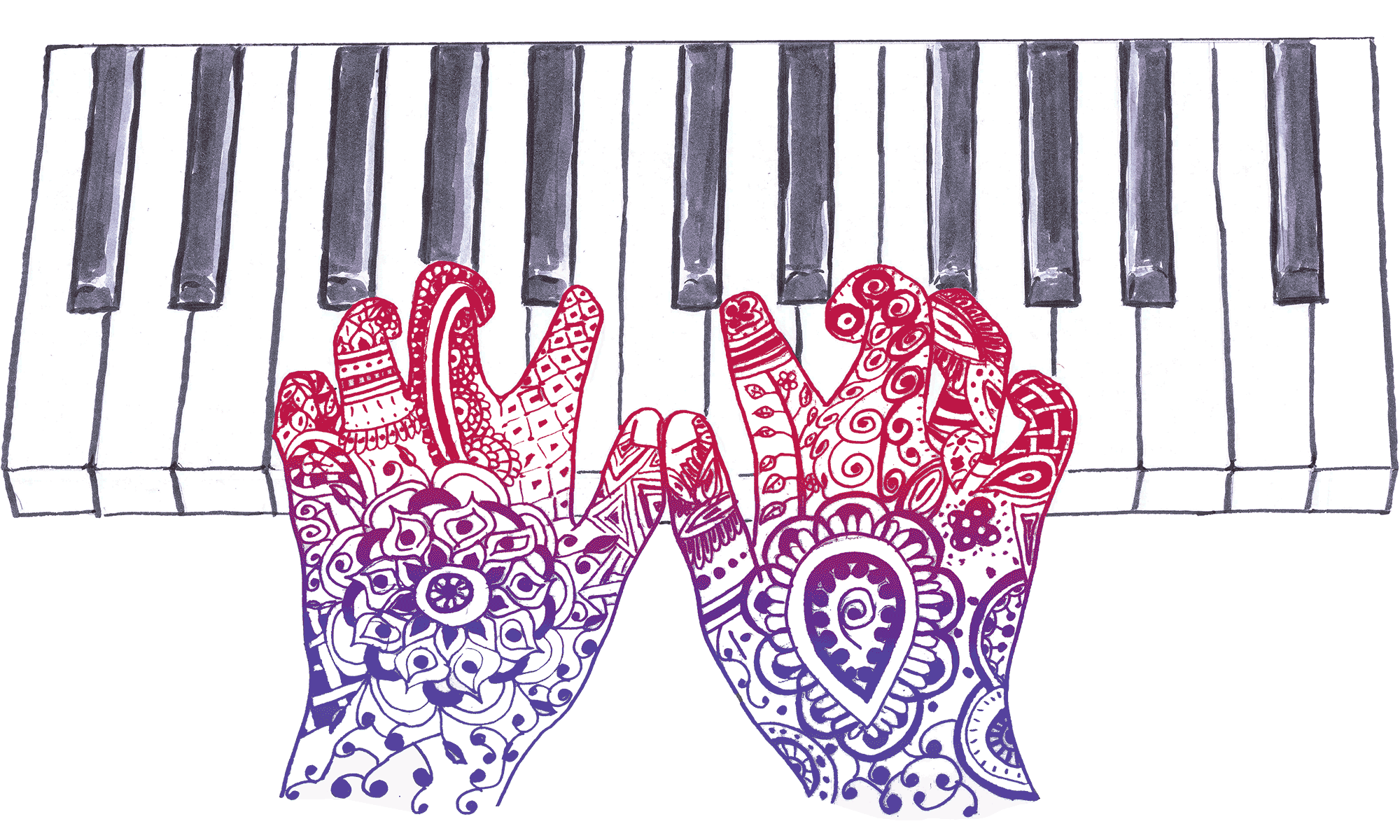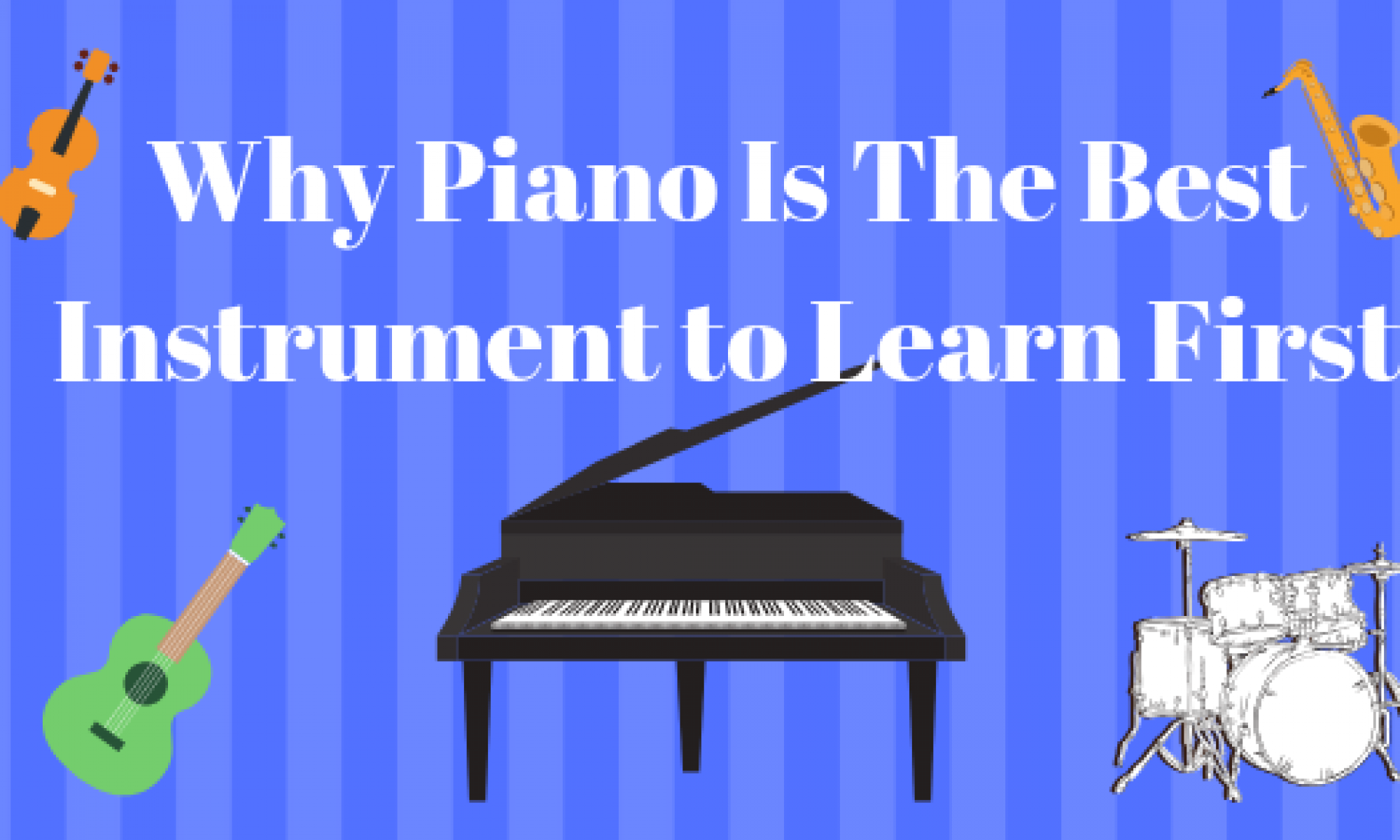If you already have strong feelings about the instrument you or your child wants to learn, there is certainly nothing wrong with starting on that instrument. However, if you are trying to decide where to start, there are many advantages that the piano offers.
You may think that as a piano teacher, it’s obvious that I feel this way but I am also someone who sings, plays multiple instruments and writes music. This advice comes from my experience learning and also from the many students to whom I’ve taught voice, piano, guitar, bass and drums. Because I learned some of those instruments as an adult, I also remember what the beginning challenges feel like.
Even if a student ends up choosing another instrument as their primary instrument down the road, piano is the best instrument to start a strong musical foundation on. There are two categories of reasons why this is the case. The first category of reasons has to do with ease of learning and the second category of reasons is about the piano’s long-term purpose as a tool for any kind of musician.
Ease of Learning:
- Unlike many other instruments, piano is one of the easiest instruments to get get a sound out of right away. When you hit a key, it makes a clear sound; there’s no squeaking, buzzing or other unpleasant noises that can happen with other instruments when attempting to sound a note.
- Piano doesn’t need the student to tune it each time before playing. Learning to tune is more difficult and often takes more time to learn than playing a simple song. This can be an obstacle if someone in the house doesn’t already know how to tune an instrument. Part of learning is developing the ear for relationships between pitches so it’s not a great idea to be practicing on an untuned instrument.
- You don’t have to create accurate pitch to play the piano. All notes already already exist on the piano and there is no possibility of hitting pitches that are between notes.
- Piano is not physically awkward to play. It doesn’t cause any discomfort to fingers (such as pressing down strings) or require holding an instrument in position in order to make sound.
- It is possible to play music that sounds good very quickly. Beginners on any instrument are bound to get frustrated and quit when the obstacles feel overwhelming. Being able to enjoy playing music fairly quickly gives a little bit of instant gratification that can help with motivation.
Long Term Tools:
- Piano is the easiest instrument to see and understand theory on because of the linear way that it is laid out. The shapes on the staff look the same on the piano which help to visualize the intervals and chords.
- Piano has the full range of the orchestra so it can be used to work out parts or play a condensed score of all parts. This is especially useful for writing music and hearing how parts sound together while writing.
- Piano can handle all of the components of music, including melody, harmony and rhythm. It can be used to teach parts to singers or instrumentalists or to provide accompaniment for practice or performance.
- Having basic keyboard/piano skills makes it easy to sequence parts in music recordings. Connecting a keyboard to a computer using MIDI, virtual instruments parts can be played into DAW (Digital Audio Workstation) software to create music recordings.
- Having basic keyboard/piano skills makes it easier and quicker to enter music into music publishing software such as Finale or Sibelius to create sheet music.
- Reading skills are easily transferred to other instruments. After reading skills have been developed on the piano, reading for most other instruments, especially those that only play one note at a time, feels easy.
Whichever instrument a student starts out on, the most important thing is to make it as accessible and fun as possible while maintaining a solid learning plan, including a realistic practice schedule. Students that are excited about what they’re learning will be more motivated to practice at home.

